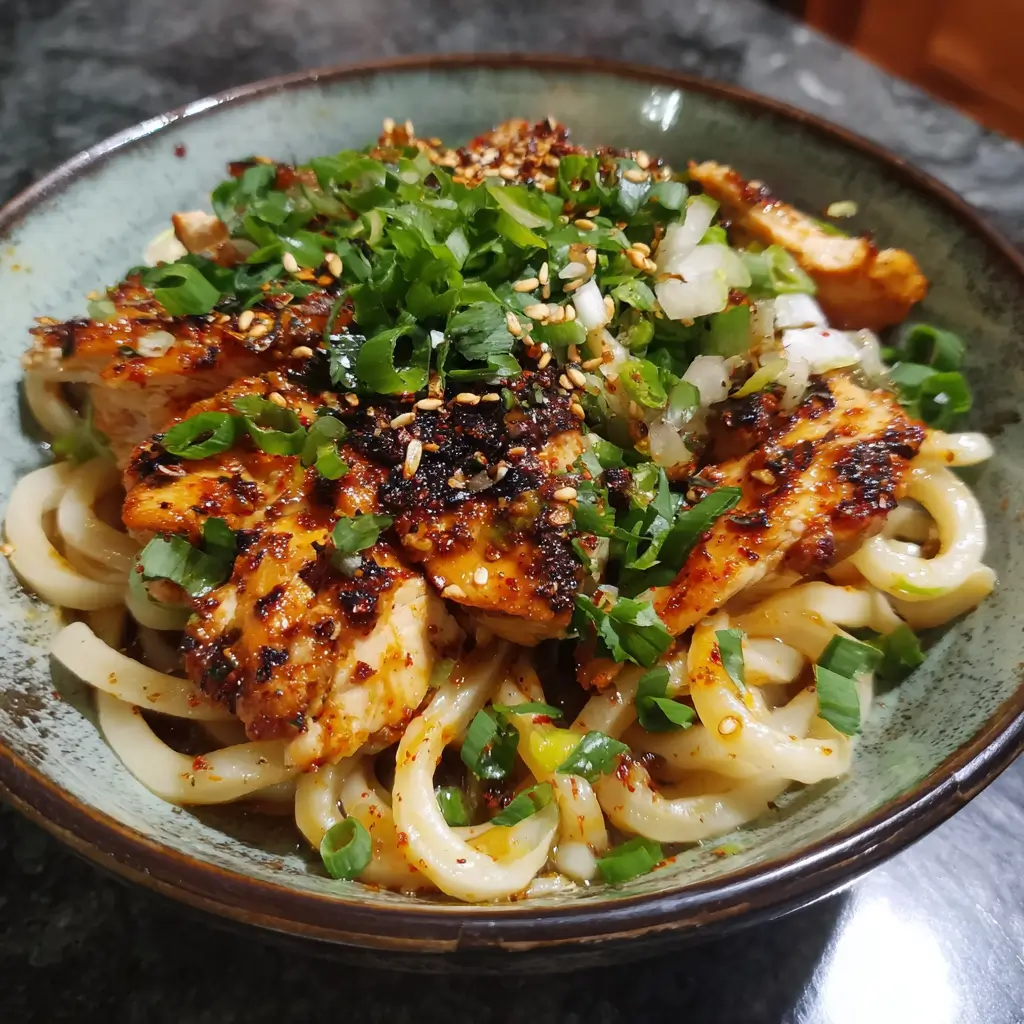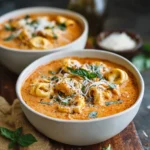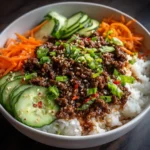Spicy Chicken Udon Noodles: A Flavorful Journey Through Heat and Comfort
The History
Udon noodles, thick and chewy wheat-based strands, have been a staple in Japanese cuisine for centuries. Their origins trace back to the Nara period (710–794), with influences believed to come from Chinese lamian noodles. Over time, udon evolved into a beloved comfort food across Japan, especially popular in regions like Kagawa Prefecture, known as the “udon capital.” Traditionally served in a mild dashi broth or chilled with a dipping sauce, udon has always embraced versatility. As global palates began craving bolder flavors, chefs and home cooks alike started experimenting—introducing spicy variations inspired by Korean gochujang, Sichuan peppercorns, and Southeast Asian chilies. Spicy chicken udon emerged as a modern fusion favorite, blending Japanese noodle craftsmanship with fiery international seasonings. Today, this dish symbolizes culinary cross-pollination—a hearty, warming meal that satisfies both traditionalists and adventurous eaters.
Ingredients Breakdown
The magic of spicy chicken udon lies in its layered ingredients, each contributing depth, texture, and heat. At the core are fresh or dried udon noodles—thick, springy, and perfect for holding onto bold sauces. The protein comes from boneless, skinless chicken thighs or breasts, prized for their ability to absorb marinades and remain tender when stir-fried. Aromatics include garlic, ginger, and green onions, forming the flavor base. For heat, we use a combination of chili paste (like gochujang or sambal oelek), red pepper flakes, and fresh Thai bird’s eye chilies. The sauce blends soy sauce, mirin, sesame oil, and a touch of honey or brown sugar for balance. Optional umami boosters include miso paste or fish sauce. Garnishes like toasted sesame seeds, nori strips, and a soft-boiled egg elevate the dish visually and taste-wise. Each ingredient plays a role in creating a symphony of savory, sweet, spicy, and umami notes.
Step-by-Step Recipe
- Prepare the Ingredients: Slice 1 lb (450g) of chicken into thin strips. Mince 3 cloves of garlic and 1-inch piece of ginger. Thinly slice 2 green onions (separating white and green parts). If using dried udon, cook according to package; if fresh, blanch for 1 minute and rinse under cold water to prevent sticking.
- Cook the Chicken: Heat 1 tbsp vegetable oil in a large skillet or wok over medium-high heat. Add chicken and sear until golden and cooked through (about 5–6 minutes). Remove and set aside.
- Sauté the Aromatics: In the same pan, add another tablespoon of oil. Sauté garlic, ginger, and the white parts of green onions for 30 seconds until fragrant. Be careful not to burn.
- Add Heat and Sauce: Stir in 2 tbsp gochujang (or sambal), 1 tsp red pepper flakes, 3 tbsp soy sauce, 1 tbsp mirin, 1 tbsp sesame oil, and 1 tsp honey. Mix well and cook for 1 minute to meld flavors.
- Combine Noodles and Chicken: Add the cooked udon noodles and chicken to the pan. Toss everything together until evenly coated with sauce, about 2–3 minutes. Add a splash of reserved noodle water if needed to loosen the sauce.
- Garnish and Serve: Transfer to bowls. Top with sliced green onion tops, toasted sesame seeds, nori strips, and optionally a halved soft-boiled egg. Serve immediately while hot.
Tips
- Noodle Texture: Avoid overcooking udon. Fresh ones only need a quick blanch; dried should be al dente to maintain chewiness.
- Marinate the Chicken: For extra flavor, marinate chicken in 1 tbsp soy sauce, 1 tsp sesame oil, and a pinch of cornstarch for 15–30 minutes before cooking.
- Control the Heat: Start with less chili paste and adjust upward. You can always add more spice, but you can’t take it away.
- Wok Hei (Breath of the Wok): Use high heat and toss quickly to achieve that smoky, restaurant-style flavor.
- Reserve Noodle Water: Starchy cooking water helps emulsify the sauce and coat the noodles evenly.
- Prep Ahead: Chop all ingredients before starting—this is a fast-cooking dish, so mise en place is essential.
Variations and Customizations
Spicy chicken udon is highly adaptable. For a vegetarian version, swap chicken with tofu, tempeh, or mushrooms like shiitake or oyster mushrooms. Replace animal-based broths with mushroom dashi. For a gluten-free option, use tamari instead of soy sauce and substitute udon with buckwheat soba or rice noodles. Want more heat? Add a drizzle of Lao Gan Ma chili crisp or a few drops of sriracha. For creaminess, swirl in a spoonful of peanut butter or coconut milk. Regional twists include adding kimchi for Korean flair, lemongrass and lime juice for Thai vibes, or curry powder for an Indian-Japanese fusion. You can also make it soup-based by simmering the sauce with dashi or chicken broth and serving the noodles in a steaming bowl. Cold spicy udon salad is another refreshing summer alternative—toss chilled noodles with a lighter spicy dressing and fresh veggies.
Health Considerations and Nutritional Value
While delicious, spicy chicken udon can be calorie-dense depending on preparation. A typical serving (approx. 500–700 calories) includes carbohydrates from udon, protein from chicken, and fats from oils and sesame. To make it healthier, use whole wheat udon for added fiber, reduce oil by using a non-stick pan, and increase vegetables like spinach, bell peppers, broccoli, or snap peas. Chicken thighs offer more flavor but contain more fat than breasts—opt for lean cuts if watching saturated fat. Gochujang and soy sauce are high in sodium, so consider low-sodium versions or reduce quantities. The capsaicin in chilies may boost metabolism and provide anti-inflammatory benefits. Ginger aids digestion, and garlic supports immune health. Balance the meal with a side of pickled vegetables or miso soup to enhance gut health. Moderation is key—enjoy this dish as part of a varied diet.
Ingredients
- 8 oz (225g) udon noodles (fresh or dried)
- 1 lb (450g) boneless chicken breast or thighs, thinly sliced
- 3 cloves garlic, minced
- 1-inch piece ginger, grated
- 2 green onions, sliced (whites and greens separated)
- 2 tbsp gochujang (Korean chili paste) or sambal oelek
- 1 tsp red pepper flakes (adjust to taste)
- 3 tbsp soy sauce (low-sodium optional)
- 1 tbsp mirin (sweet rice wine)
- 1 tbsp sesame oil
- 1 tsp honey or brown sugar
- 2 tbsp vegetable oil (divided)
- Toasted sesame seeds, for garnish
- Nori (seaweed) strips, for garnish
- Soft-boiled eggs (optional)
- Optional veggies: spinach, mushrooms, bell peppers, bok choy
Directions
- Bring a large pot of water to boil. Cook udon noodles according to package instructions. Drain, rinse under cold water, and set aside.
- In a large wok or skillet, heat 1 tbsp vegetable oil over medium-high heat. Add chicken and cook until no longer pink, about 5–6 minutes. Remove and set aside.
- Add remaining 1 tbsp oil to the pan. Sauté garlic, ginger, and white parts of green onions for 30 seconds until aromatic.
- Stir in gochujang, red pepper flakes, soy sauce, mirin, sesame oil, and honey. Cook for 1 minute to deepen flavors.
- Add cooked udon and chicken to the pan. Toss well to coat. If using vegetables, add them now and stir-fry until tender-crisp.
- If the mixture seems dry, add 2–3 tbsp of reserved noodle water to loosen the sauce.
- Cook for another 2–3 minutes, stirring constantly, until everything is heated through and well combined.
- Transfer to serving bowls. Garnish with green onion tops, sesame seeds, nori, and soft-boiled egg if desired.
- Serve immediately while hot, with extra chili oil or soy sauce on the side.
FAQ
Can I use other types of noodles?
Yes! While udon offers the best chewy texture, you can substitute with soba, ramen, or even spaghetti in a pinch.
How spicy is this dish?
It depends on your chili choice and amount. Gochujang is moderately spicy with sweetness; sambal is hotter. Adjust to your tolerance.
Can I make this ahead of time?
You can prep ingredients in advance, but best served fresh. Reheated leftovers may become dry—add a splash of water when microwaving.
Is gochujang necessary?
It adds authentic depth, but you can use sriracha or chili garlic sauce as substitutes, though the flavor profile will differ.
Can I freeze leftovers?
Not recommended—noodles tend to become mushy upon thawing. Store in the fridge for up to 3 days.
What can I serve with spicy chicken udon?
Pair with a simple cucumber salad, edamame, miso soup, or steamed dumplings for a complete meal.
Summary
Spicy Chicken Udon Noodles blend rich Japanese tradition with bold, fiery flavors from across Asia, creating a deeply satisfying one-pan meal. Packed with tender chicken, chewy noodles, and a savory-spicy sauce, it’s comfort food elevated to an art form.










